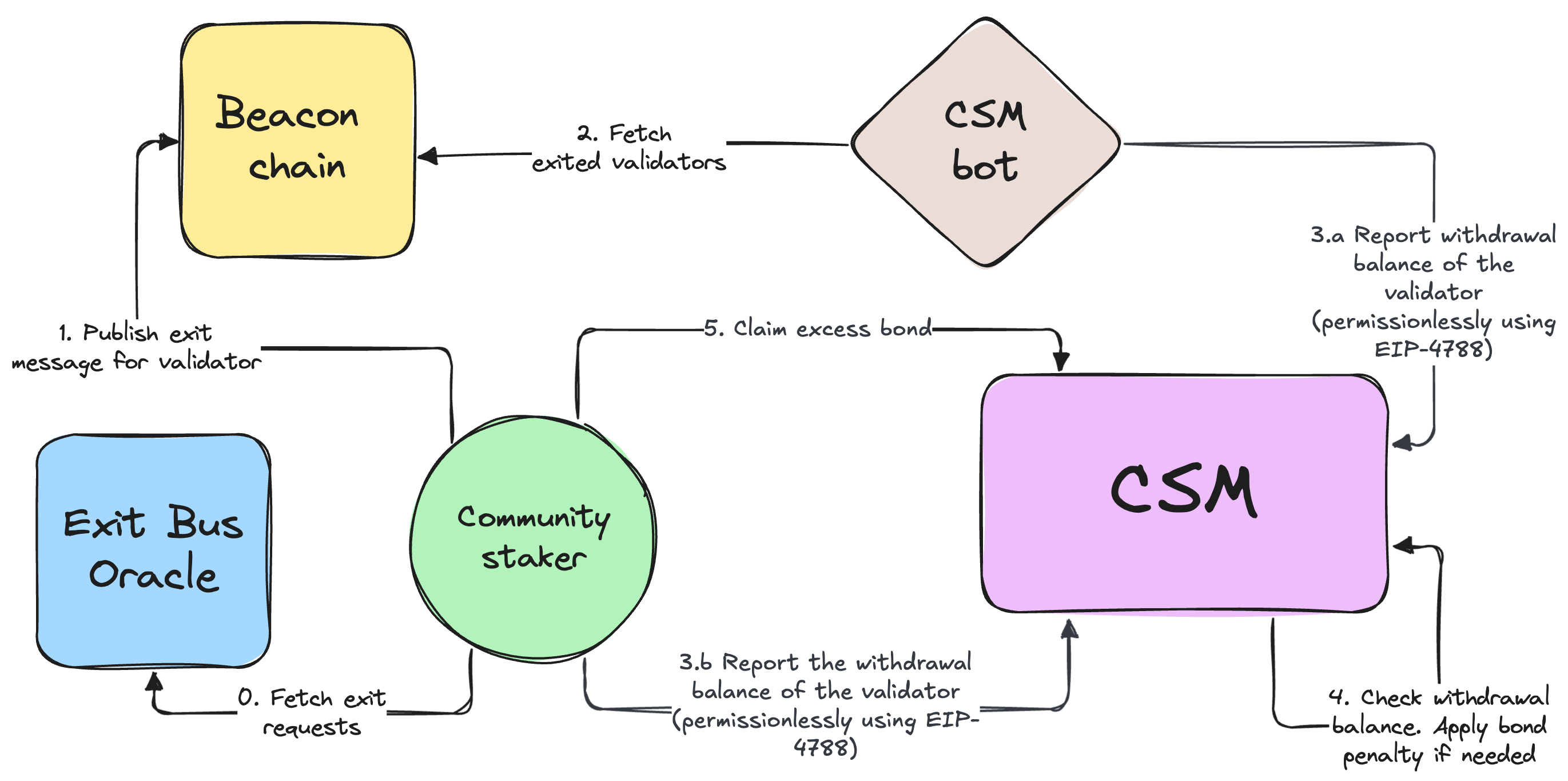Validator Exits

Voluntary exits
Given CSM's permissionless nature, NOs can voluntarily exit their validators at any moment by publishing an exit message to the Ethereum Consensus Layer.
Should a Node Operator decide to exit their validators using EIP-7002, they can do so via the CSEjector contract.
Exiting validators using EIP-7002 is an emergency measure and should be used only in exceptional cases. It is recommended to exit validators using the standard method of publishing an exit message to the Ethereum Consensus Layer.
Protocol-initiated exits
For consistency with the core protocol and other staking modules, CSM uses VEBO to request or trigger validator exits. Details about the overall processes and mechanisms through which validator exits are requested by the protocol and why, including how these rules apply to CSM, are explained in the Lido on Ethereum Validator Exits SNOP 3.0 (IPFS, GitHub)
From the core protocol side, validator exit can be requested to cover withdrawal requests from stETH holders or according to the DAO's decision.
From CSM side, validator exits can be requested or triggered for:
- Unbonded validators. These exits are requested automatically using the
targetLimitMode = 2(forced mode); - Validators with an excessive number of bad performance strikes. These exits are triggered via the permissionless method on the CSStrikes contract.
targetLimitMode = 2 (forced mode) was introduced within the updated version of Staking Router. In short, it is similar to the existing targetLimit but exits for the validators above targetLimit with targetLimitMode = 2 (forced mode) can be requested within the next VEBO report, even without a need to fulfill withdrawal requests from stETH holders.
Node Operators should follow VEBO events (for example, by using the Ejector) to ensure they exit validators on time. The following penalties and limiting measures should be applied if the Node Operator fails to exit requested validators after in time:
- VEBO will trigger exits for the delayed validators;
- CSM will penalize the Node Operator's bond tokens for the delayed exits;
- CSM will confiscate
withdrawalRequestFeepaid by the protocol to trigger delayed validator exits from the Node Operator's bond tokens;
Also, in exceptional cases, Lido DAO can trigger exits for Node Operator's validators based on the DAO's decision.
Withdrawal balance reporting
The withdrawal balance of the validator is required to release the bond and calculate the exit penalty, if any. This balance is reported permissionlessly using EIP-4788 by the CSM bot or the Node Operator themselves.